Years ago, insulin was only discussed in reference to diabetes. Insulin is the hormone that drives glucose out of the bloodstream and into cells, and diabetes is the loss of the ability to control blood glucose levels. Yet insulin is so much more than a hormone that controls glucose. For one, it's highly anabolic, which means it's critical for building muscle.
Insulin also has a dark side, because it can increase fat storage. The challenge is to learn how to spike insulin to optimally recover from workouts and grow, while also blunting it to stay lean.
Do you know all the facts about insulin and how to use it to your advantage? Don't be so sure. If not, my insulin guide will teach you how.
Insulin and Muscle
Insulin is actually a protein, and it is produced and released by the pancreas whenever you eat carbs, protein, or both. (That is, if the pancreas is working properly). Yet unlike the proteins that are the physical building blocks of muscle, this is a functional protein, much like growth hormone.




Like all other proteins, insulin is a chain of amino acids strung together. But the way this protein chain is folded makes it act more like a signaling mechanism than a building block.
From the pancreas, insulin enters the blood stream and travels to various tissues, including muscle tissue. The muscle fibers (or cells) are lined with insulin receptors, similar to a docking station. Once the insulin molecule docks onto the receptor, it signals the muscle cell to open up gates. This allows allow glucose, amino acids, and creatine to enter the muscles. This process is a major reason why insulin is so important for building muscle.
Another reason is that when insulin docks onto the muscle cells, it instigates biochemical reactions in the muscle that increase protein synthesis, which is the building of muscle out of the amino acids that are entering the muscle cells. In addition, insulin also decreases muscle breakdown, which further enhances muscle growth.
Insulin also indirectly aids in muscle development by causing the blood vessels to relax and dilate, allowing greater blood flow to the muscles. By increasing blood flow, insulin can help get even more nutrients like glucose and amino acids to the muscles. This is why you'll see bodybuilders pounding simple carbs on contest day. Not only does the corresponding spike in insulin drive the carbs into the muscles to keep them full, it also boosts vascularity.
Insulin and Fat
Insulin's release from the pancreas signals the body that it has just been fed. Since the body is always trying to spare energy, it halts the body's burning of stored fat, instead turning to the nutrients that have just been ingested. Meanwhile, insulin also works on fat cells similar to how it works on muscle cells, signaling the gates to open and nutrient storage to commence.


An increase in the uptake of glucose and fats causes the body to store more body fat. More fat is stored, less is burned—you can see how spiking insulin levels throughout the day would lead to fat gain over time.
As long as those insulin receptors work as designed, a spike in insulin levels clears out the majority of the glucose in the blood, pushing it into muscle and fat cells.
This lowers blood glucose levels in an orderly fashion, if someone has a healthy glucose metabolism, but it can also lead to a crash—either because the person's glucose tolerance is impaired, or too many simple carbs were consumed at once. The low blood sugar that results from a crash is known as hypoglycemia.
A crash will make you feel like your energy levels have been zapped. Not only is this bad for your general well-being, but it's bad for your physique. What's more, when your energy crashes, your hunger soars. This often causes people to over-eat. For most of us, this means reaching for simple carbs—which can lead to another crash.
Master Your Insulin Levels
Since insulin has a good side and a bad side, it's crucial to know how to use insulin for your gain—muscle gain, that is—while avoiding its effects on fat gain. Follow these six rules and you'll be good to go.
Rule 1 /// Know the GI
The types of carbs you eat can make or break your ability to rule insulin. Carbs can be categorized into two basic categories: 1) high glycemic index (GI) carbs and 2) low GI carbs. The glycemic index refers to how fast the carbs in the food end up as glucose in your blood stream.
High GI foods are those that pass rapidly through your digestive system (i.e. fast-digesting) and into your blood stream. Because these types of carbs arrive in your bloodstream so quickly, they drive up blood glucose levels. This causes insulin to spike so that your body can utilize the glucose. Low GI foods are those that pass more slowly through the digestive system (i.e. slow-digesting) and gradually enter the blood stream, keeping insulin levels more consistent.
Typically, simple sugars such as table sugar (sucrose) are high GI carbs, while most complex carbs, such as sweet potatoes, are low GI carbs. However, there are many exceptions to this rule. For example, fruit is high in the sugar fructose, yet most fruits are very low GI carbs.
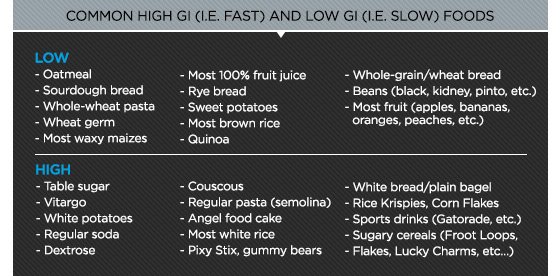
The reason for this is twofold. For one, most fruits are high in fiber, which slows down the digestion somewhat. Also, the sugar fructose can't be used by the muscles for fuel. It must first be converted into glucose by the liver. This process takes time to complete, keeping most fruits in the low GI category. Exceptions to this are cantaloupes, dates, and watermelon, which tend to be higher GI fruits than their counterparts.
On the other side of the coin, white potatoes are complex carbs, yet they are digested very rapidly and deliver their glucose into the bloodstream quickly, making them a high GI complex carb. The same can be said of white bread and most varieties of white rice.
Rule 2 /// Go Low Most of the Time
At most meals, you want to focus on low GI carbs if you have any carbs at all. This will keep insulin levels low, thereby helping to maintain energy levels throughout the day, as well as burn fat. This is not just inference based on what we know about insulin's functions in the body. It has been shown in several clinical studies.
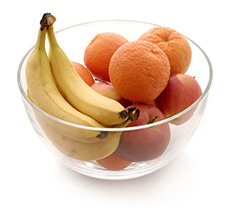
One of the most critical times to go with low GI carbs is right before workouts. For years, bodybuilders went with high GI carbs before workouts, reasoning that they needed fast energy. The problem with this thinking is that they got exactly that—fast energy—but it quickly ran out, killing their intensity before the workout was over.
In addition, they were halting fat-burning during workouts. If you consume carbs before a workout, go with 20-40 grams of low GI carbs within 30 minutes before workouts, along with 20 grams of protein powder.
Keeping generally-low insulin levels might also help your longevity outside of the gym. Research has show that when insulin levels are maintained at a low level, animals live about 50 percent longer. Although the precise mechanism for this anti-aging effect is undetermined, it is believed that the signaling that insulin causes in cells degrades them over time. By keeping insulin levels low, less insulin signaling occurs within cells, which results in healthier and longer-living cells.
Rule 3 /// Know When to Get High
You want to generally observe rule number three, but there are two times of day when high GI carbs can pay off for you. The first time is within minutes of waking—but only if your goal is to gain mass.

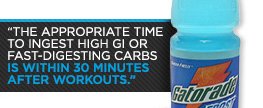

When you wake up, you have just endured a solid 6-8 hours of fasting. That has caused your muscle and liver glycogen (the storage form of carbs in the body) to drop. This drop in glycogen signals your body to tear down muscle tissue for fuel.
Taking in about 20-40 grams of fast-digesting carbs as soon as you get out of bed will boost insulin and quickly restock your glycogen levels and stop the muscle onslaught.
I recommend fruit in the morning. It offers other benefits such as antioxidants and other beneficial phytochemicals. Higher GI fruits may be quickest, but even low GI fruits are good.
The main reason fruits are low GI is fructose, which needs to go to the liver to be processed. But once it gets to the liver, it signals the body to stop breaking down muscle. Be sure to take those carbs with 20-40 grams of fast-digesting protein, such as whey, which will restore the muscle lost during the night.
On the other hand, if you are trying to maximize fat-loss, you may want to skip carbs altogether in the morning. Yes, you are waking in a catabolic state, but you are also burning fat due to the lower glycogen levels. Getting in a protein shake will help stop some of the muscle breakdown without halting too much of the fat burning.
No matter if your goal is gaining mass or losing fat, the other appropriate time to take in high GI or fast-digesting carbs is within 30 minutes after workouts. Here, you'll want to shoot for about 30-80 grams of those carbs along with 40 grams of protein powder. At this time, the high GI carbs will spike your insulin, which will drive those carbs and amino acids for the protein, as well as creatine (assuming you take creatine) into your muscles.
The fast carbs are critical for quickly restocking the muscle glycogen used during the workout. The amino acids will boost muscle growth, as well as further boost insulin. And the creatine, well, you should know by now that it will boost muscle growth. In addition, the insulin signals the muscle to kickstart muscle growth and halt muscle breakdown.
Rule 4 /// Get Help from Protein
Research confirms that when you take high GI carbs along with fast-digesting protein, such as whey, after workouts, insulin levels soar even higher than when just high GI carbs are consumed. Whey protein has been suggested in a few studies to boost insulin levels as high as high GI carbs. This has caused many people to wonder if they should use whey protein between meals and before workouts because it spikes insulin so much. Will this hinder fat-loss?
Whey appears to spike insulin, due mainly to the amount of the branched-chain amino acid (BCAA) leucine it contains, but it does not appear to hinder fat loss in the long run. Studies show that supplementing with whey, or BCAAs, or even just leucine, actually aids in fat loss. This supplementation also appears to increase insulin sensitivity, a measure of how well your insulin receptors recognize insulin. High insulin sensitivity is good because it allows the muscles to take up more carbs. And because the leucine blunts hunger, you eat less in the long run.
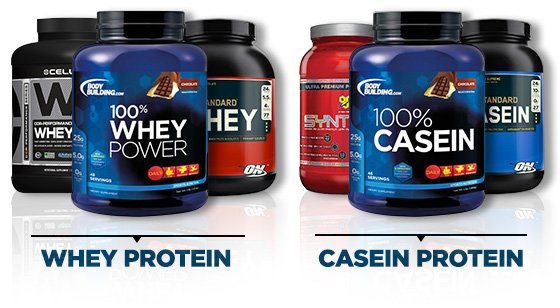
So should you worry about whey protein spiking insulin? Not really. However, if you reach a point where you are having trouble dropping those last few pounds of fat on your stubborn areas, consider using casein protein, particularly micellar casein, which is a milk protein that does not spike insulin levels the way whey does. It's appropriate before workouts and any other time of day when you normally have whey shakes between meals.
This can help to get you the quality protein you need and still keep your insulin levels low; this helps keep you in an optimal state of fat-burning so you can encourage those trouble spots to let go of their fat. To get the best of both whey and casein, you can also combine them post-workout, something I often suggest in order to maximize muscle growth.
Rule 5 /// Use Insulin Mimetics
Some supplements can enhance or mimic insulin's effects at the muscle cells, which can help you to get the most out of your post-workout rise. Two of the most prominent of these are alpha lipoic acid (ALA), and Cinnulin-PF.
ALA is a potent antioxidant that enhances insulin's actions at the muscle cell. Cinnulin-PF is a trademarked water-soluble cinnamon extract whose active ingredient, hydroxychalcone, mimics the effects of insulin at the muscle cells.
If you're trying to maximize insulin's influence on muscle gain, consider stacking 300-500 mg of ALA and/or 100-250 mg of Cinnulin-PF with your post-workout carbs and protein. This could enhance insulin's actions, potentially leading to better recovery and growth after workouts.
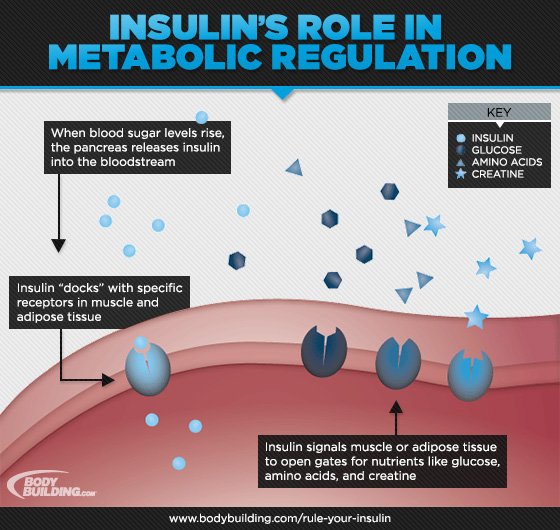

No comments:
Post a Comment